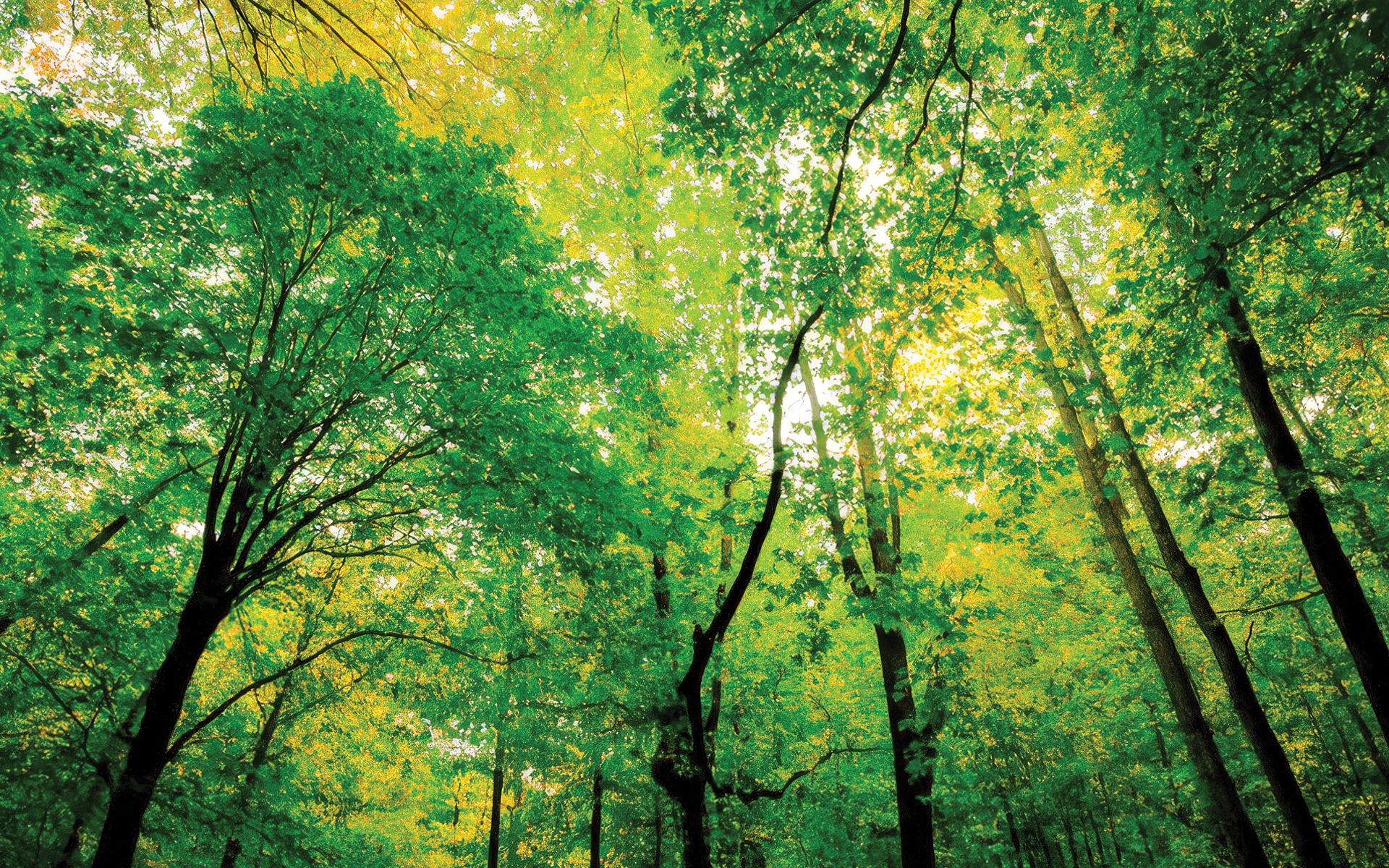Plants Harvesting Light and the Color Green

In This Article
-
Why are most of the plants green. Why green and not blue or red?
-
Our eyes are created with pigments in three different cone cells to make combinations of different colors out of different wavelengths to recognize hundreds of thousands of colors.
-
Green stands out more strikingly during post-production and can be easily manipulated. This makes it possible to film scenes set in battlefields or outer space—productions that would otherwise be prohibitively expensive—more affordably and efficiently.
We live in a world full of colors. Parrots, for instance, are a delight to watch with their vibrant feathers and charming appearance. each of the hundreds of parrot species is a wonderful work of art. The eye-catching colors of blue-and-yellow macaw are symmetrically distributed on the animal's body. Its beak and neck are black, its face is white and decorated with thin black stripes, its forehead is green, its back and tail are blue, and its wings and abdomen are golden yellow. This distribution of colors results from specific pigments and structures: the black areas contain pigments that absorb all wavelengths of light, while the white parts are composed of materials that reflect all colors. The yellow, blue, and green sections are structured to reflect three different wavelengths from the white light.
This distribution of colors requires precise measurements performed at the atomic level. Each color in the parrot's feathers is encoded in its DNA, directing the arrangement of atoms to reflect specific colors on different parts of its body. Pigments are synthesized to allow us to see light of a certain wavelength as a certain color.
The secret of green
Color can be defined as the image that forms in our brain – and is perceived by our soul – as a result of stimulation in our eyes by different wavelengths of light.
One question many of us wonder is why most of the plants are green. Why green and not blue or red? Shouldn't plants, which are constantly exposed to the sun's rays, absorb all colors and become black? [1].
The chlorophyll pigment is responsible for making plants appear green. It does so by absorbing a large part of the light spectrum and reflecting the green light. Plants survive and grow through photosynthesis, a process in which sunlight is used to produce glucose and store energy by synthesizing food from carbon dioxide and water. For all this to be possible, the Sun plays a key role.
In the visible spectrum, the most intense (most scattered) wavelength of light emanating from the Sun is green. In other words, the color that has the most energy is green. Green plants, which are expected to absorb all of this energy, have been found to reflect only a part of the green spectrum.
Green: The regulator color
Scientists studying the mechanism of photosynthesis have found that plants use the green spectrum as a regulator [2]. As the Earth rotates, the angle of the Sun’s rays constantly changes, altering the positions of branches and leaves relative to the Sun. Thus, and due to the rainfall and the movements of clouds, plants do not receive the same intensity of sunlight, that is, energy, at all times, because the spectrum is constantly changing. We can compare this to an electrical appliance that would be damaged if the power supply kept fluctuating. In such cases, regulators are used to adjust the voltage (220V or 110V) by decreasing or increasing the incoming electricity. Similarly, to optimize photosynthesis, which requires a stable amount of energy, plants adjust their color by regulating the light they absorb. This explains why plants sometimes appear dark green and at other times light green. The ability to regulate ever-changing solar energy is only possible by reflecting certain regions of the solar spectrum, producing various shades of green. By reflecting these shades based on their conditions, plants achieve more stable growth. This stability in plants is crucial to maintain the continuity in the chain of life in nature, ensuring the vitality of plants through the efficient harvesting of light.
The leaves of some trees, such as the species Liquidambar styraciflua, change color based on the angle of the Sun's rays, adjusting with the seasons [3]. This wonderful phenomenon occurs as the color pigments in the leaves change. Thanks to this adaptive capacity given to plants, trees maximize their benefit from sunlight while transforming the landscape into a marvelous exhibition adorned with shades of green, red, and yellow.
Making the most of the Sun
Another point to note is that leaves are positioned to maximize their use of sunlight, an indispensable element of photosynthesis. From a distance, branches and leaves may appear randomly arranged, but when examined in detail, we come across a magnificent artwork. In every tree, the spot where branches grow, the arrangement of leaves around them, and even the symmetrical shapes of flowers follow precise mathematical rules. In addition to this, each plant has its own unique branching and leaf arrangement rules. These arrangements, often forming circular or spiral structures, are encoded in the plant’s DNA—similar to the Fibonacci sequence—ensuring that leaves do not shade one another and receive maximum sunlight. To optimize light absorption, leaves need to be flat, which is why leaves are created in this way. Photocell solar panels operate on the same principle [4].
Our eyes
The mechanism of vision can be summarized as follows: Light entering the eye passes through the cornea, pupil, lens, and the dark chamber before reaching the retina. At the back of the retina are cells that perceive light known as rods and cones because of their shape. Here, light is converted into electrical signals and sent to the brain. Cone cells are responsible for color perception and require bright light to function. Humans have three types of cone cells, each responding to different wavelengths of light. Each of these carries pigments that have varying sensitivity to light [5].
| Cone cells | Wavelength range of light |
|---|---|
| Blue | 420–440 nm |
| Green | 534–545 nm |
| Red | 564–580 nm |
Electrical signals from receptors stimulated by light are transmitted to the brain via the optic (visual) nerve. Studies show that both cone cells (which function in medium to bright light) and rod cells (which function in low light) are most sensitive to green [6]. One reason we feel at peace in the woods is that green is the most restful color for our eyes. The fact that the most intense of the visible rays coming from the Sun is green shows that the One who created these rays, also created our eyes, and the phenomenon of seeing.
A healthy human eye can distinguish about a million different colors [7]. Just as painters obtain different colors by making mixtures of three basic colors, our eyes are created with pigments in three different cone cells to make combinations of different colors out of different wavelengths to recognize hundreds of thousands of colors.
Cameras and the color green
Cameras are devices invented by mimicking the human eye. Its contact with light, focusing mechanisms, cover, and lenses are all inspired by how our eyes function. The basic task of all cameras, including the ones in mobile phones, is to capture three colors (red, green, blue), just as our eyes do. Cameras have photo sensors that can detect these colors. American inventor Bryce Bayer, who discovered the sensitivity of our eyes to green light, succeeded in obtaining clearer images by doubling the green photo sensor in cameras [8]. This is how cameras today work.
Filming
Another area where the color green plays a role is in filmmaking. Green screen technology, also known as chroma key, is used to combine and edit two pictures or video streams. Green stands out more strikingly during post-production and can be easily manipulated. This makes it possible to film scenes set in battlefields or outer space—productions that would otherwise be prohibitively expensive—more affordably and efficiently.
Colors with short wavelengths, such as yellow and red, which evoke the Sun and fire, are called warm colors. In contrast, colors with long wavelengths, such as purple, navy blue, and blue are classified as cool. Green is in the middle of the spectrum.
The reason leaves turn yellow and red as autumn and winter approach is due to the breakdown of chlorophyll molecules, which leads to the production of new substances that interact with light differently. Pigments in the flavonoid and carotenoid groups serve various functions, including protecting chlorophyll from excessive ultraviolet exposure. Red and purple hues come from anthocyanins, orange shades from carotenoids, and yellow tones from xanthophylls. This vibrant display of colors not only adds beauty to nature but also reminds us that such a masterpiece cannot come by chance.

The solar spectrum reaches its highest value in green. In other words, the most intense (most scattered) wavelength of light scattered from the Sun in the visible spectrum is green. |
And whatsoever He has created for you on earth of varying colors (and diverse forms and qualities): surely in that is a sign for people who reflect and are mindful. (an-Nahl 16:13)
Notes
- Since sunlight is made up of a mixture of all colors, when you go into space, it appears white, which is its true color. It appears yellow on earth because of our atmosphere, which acts as a filter.
- Trevor B. Arp ve ark. “Quieting a noisy antenna reproduces photosynthetic light-harvesting spectra”, Science, 368/6, 26 June 2020.
- “Liquidambar styraciflua”, en.wikipedia.org/wiki/Liquidambar_styraciflua
- “Solar Energy”, www.nationalgeographic.org/encyclopedia/solar-energy
- Arif Sarsılmaz, "I Am Hasan's Eye", Sızıntı, August 2000.
- Katarzyna A. Hussey ve ark. “Patterning and Development of Photoreceptors in the Human Retina”, Front. Cell Dev. Biol. 10/878350, 2022.
- “How human eyes see different colours”, osmosmagazine.com/science/biology/how-human-eyes-see-different-colours/
- “Bryce Bayer”, en.wikipedia.org/wiki/Bryce_Bayer









